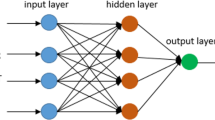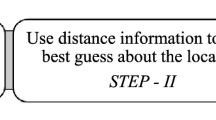Abstract
Sensor nodes are standalone devices in wireless sensor networks (WSNs) that draw energy from their batteries to carry out their functions. When a sensor node exhausts its power, it is not able to function anymore. The death of a sensor node can lead to traffic interruption because other nodes may rely on this node to forward their data. Hence, two important things should be considered while designing medium access control (MAC) protocols for WSNs: minimizing unnecessary energy consumption in sensor nodes and distributing load uniformly among them. The proposed model, Energy-Efficient Medium Access Control (EE-MAC), works towards achieving both these things. EE-MAC considers four crucial parameters: threshold energy (TE), proximity threshold (PT), maximum cluster size (MCS), and verification period (VER). The TE value ensures that sensor nodes with low energy levels do not become cluster heads. The PT value prevents cluster heads from lying too close to each other. The MCS value stops clusters from becoming too big. The VER is used to minimize idle listening in cluster heads. EE-MAC is compared with four existing MAC protocols, namely BMA-MAC, LDC-MAC, BEE-MAC, and ES-MAC, in four different scenarios. In scenario 1, 100 sensor nodes are randomly deployed in a \(100\times 100\,\hbox{m}^2\) area in which 10% sensor nodes are cluster heads. In scenario 2, 100 sensor nodes are randomly deployed in a \(100\times 100\,\hbox{m}^2\) area in which 20% sensor nodes are cluster heads. In scenario 3, 200 sensor nodes are randomly deployed in a \(100\times 100\,\hbox{m}^2\) area in which 10% sensor nodes are cluster heads. In scenario 4, 200 sensor nodes are randomly deployed in a \(100\times 100\,\hbox{m}^2\) area in which 20% sensor nodes are cluster heads. When simulating a protocol, the network lifetime is decided by the round number in which the first node dies. During the simulation of EE-MAC in scenario 1, the first node dies in round number 3289. During the simulation of EE-MAC in scenario 2, the first node dies in round number 2539. During the simulation of EE-MAC in scenario 3, the first node dies in round number 2858. During the simulation of EE-MAC in scenario 4, the first node dies in round number 2109. It is observed that EE-MAC outperforms the other protocols in extending the network lifetime in all the scenarios.







Similar content being viewed by others
Data availability
Data sharing not applicable to this article as no datasets were generated or analysed during the current study.
Code availability
Code is available with the authors.
References
Akyildiz, I. F., Su, W., Sankarasubramaniam, Y., & Cayirci, E. (2002). A survey on sensor networks. IEEE Communications Magazine, 40(8), 102–114.
Khan, J. A., Qureshi, H. K., & Iqbal, A. (2015). Energy management in wireless sensor networks: A survey. Computers and Electrical Engineering, 41, 159–176.
Anastasi, G., Conti, M., Di Francesco, M., & Passarella, A. (2009). Energy conservation in wireless sensor networks: A survey. Ad Hoc Networks, 7(3), 537–568.
Heinzelman, W. R., Chandrakasan, A., & Balakrishnan, H. (2000). Energy-efficient communication protocol for wireless microsensor networks. In System sciences, 2000. Proceedings of the 33rd annual Hawaii international conference on (pp. 10–pp). IEEE.
Li, J., & Lazarou, G. Y. (2004). A bit-map-assisted energy-efficient mac scheme for wireless sensor networks. In Proceedings of the 3rd international symposium on information processing in sensor networks (pp. 55–60). ACM.
Sazak, N., Erturk, I., Koklukaya, E., & Cakiroglu, M. (2010). An energy efficient mac protocol for cluster based event driven wsn applications. In SoftCOM 2010, 18th international conference on software, telecommunications and computer networks (pp. 76–81). IEEE.
Boulfekhar, S., Bouallouche, L., & Benmohammed, M. (2012). S-TDMA: A new mac protocol for wireless sensor networks. In 2012 IEEE/ACM 16th international symposium on distributed simulation and real time applications (pp. 29–35). IEEE.
Omari, M., & Fateh, W. H. (2015). Enhancing multihop routing protocols in wireless sensor networks using leach-1r. In 2015 2nd world symposium on web applications and networking (WSWAN) (pp. 1–6). IEEE.
Alvi, A. N., Bouk, S. H., Ahmed, S. H., Yaqub, M. A., Sarkar, M., & Song, H. (2016). BEST-MAC: Bitmap-assisted efficient and scalable TDMA-based WSN MAC protocol for smart cities. IEEE Access, 4(1), 312–322.
Debasis, K., & Singh, M. P. (2016). A low duty cycle MAC protocol for energy conservation in wireless sensor networks. International Journal of Control Theory and Applications, 9(41), 991–995.
Debasis, K., & Singh, M. P. (2018). Bit-map-assisted energy-efficient MAC protocol for wireless sensor networks. International Journal of Advanced Science and Technology, 119, 111–122.
El Alami, H., & Najid, A. (2019). Ech: An enhanced clustering hierarchy approach to maximize lifetime of wireless sensor networks. IEEE Access, 7, 107142–107153.
Elsmany, E. F. A., Omar, M. A., Wan, T.-C., & Altahir, A. A. (2019). Eesra: Energy efficient scalable routing algorithm for wireless sensor networks. IEEE Access, 7, 96974–96983.
Elkamel, R., Messouadi, A., & Cherif, A. (2019). Extending the lifetime of wireless sensor networks through mitigating the hot spot problem. Journal of Parallel and Distributed Computing, 133, 159–169.
Tolani, M., Singh, R. K., et al. (2019). Energy efficient adaptive bit-map-assisted medium access control protocol. Wireless Personal Communications, 108(3), 1595–1610.
Liu, Y., Wu, Q., Zhao, T., Tie, Y., Bai, F., & Jin, M. (2019). An improved energy-efficient routing protocol for wireless sensor networks. Sensors, 19(20), 4579.
Tolani, M., Singh, R. K., et al. (2020). Adaptive duty-cycle-enabled energy-efficient bit-map-assisted MAC protocol. SN Computer Science, 1(3), 1–11.
Tolani, M., Singh, R. K., et al. (2020). Energy-efficient hybrid MAC protocol for railway monitoring sensor network. SN Applied Sciences, 2(8), 1–17.
Abdurohman, M., Supriadi, Y., & Fahmi, F. Z. (2020). A modified e-leach routing protocol for improving the lifetime of a wireless sensor network. Journal of Information Processing Systems, 16(4), 845–858.
Debasis, K., Singh, M. P., & Gupta, R. (2021). An energy saving medium access control protocol for wireless sensor networks. Journal of Ambient Intelligence and Humanized Computing, 12(1), 1435–1448.
Funding
The authors did not receive support from any organization for the submitted work.
Author information
Authors and Affiliations
Corresponding author
Ethics declarations
Conflict of interest
The authors have no conflicts of interest to declare that are relevant to the content of this article.
Ethical approval
Not applicable.
Consent to participate
Not applicable.
Consent for publication
Authors give their consent to publish this paper in the journal.
Additional information
Publisher's Note
Springer Nature remains neutral with regard to jurisdictional claims in published maps and institutional affiliations.
Rights and permissions
About this article
Cite this article
Ranjan, R., Debasis, K., Gupta, R. et al. Energy-Efficient Medium Access Control in Wireless Sensor Networks. Wireless Pers Commun 122, 409–427 (2022). https://doi.org/10.1007/s11277-021-08905-2
Accepted:
Published:
Issue Date:
DOI: https://doi.org/10.1007/s11277-021-08905-2




